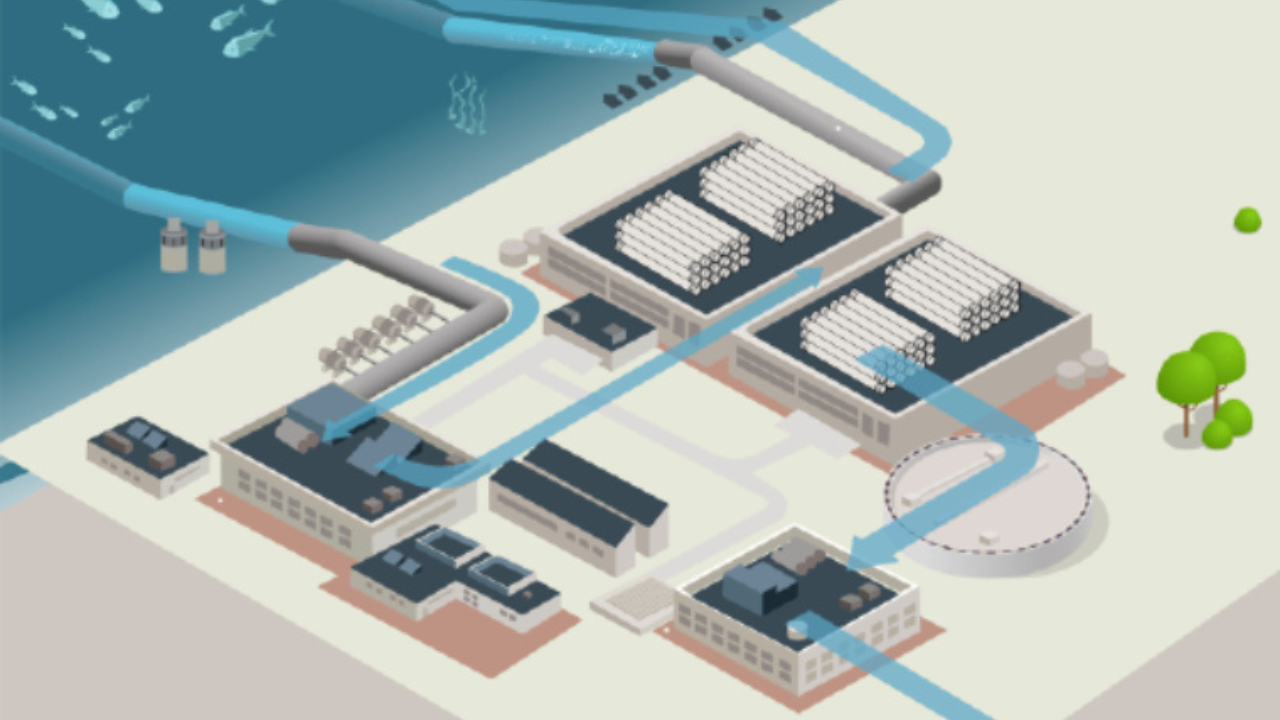“In this island of Atlantis there was a great and wonderful empire… But afterwards there occurred violent earthquakes and floods; and in a single day and night of misfortune all your warlike men in a body sank into the earth, and the island of Atlantis in like manner disappeared in the depths of the sea.”
Thus Plato relates in the Timaeus the tragic end of the legendary island, swallowed by the sea. This tale serves as both a cautionary story of human hubris and a stark reminder of an island’s vulnerability amidst the vast, unforgiving ocean.
Today, the world’s islands confront a slower but no less devastating cataclysm: the rising sea levels driven by global warming. In addition to this existential threat, many islands grapple with other formidable challenges linked to climate change, including providing drinking water to their inhabitants. Islands and marine archipelagos are paradoxically encircled by vast bodies of water they cannot readily utilize.
ACCIONA is dedicated to addressing both these pressing challenges. We actively contribute to climate change mitigation by promoting the decarbonization of the economy and transitioning to renewable energy sources. Simultaneously, we offer the cutting-edge technology required to ensure a clean and sustainable freshwater supply for island communities, including the Canary Islands, the Balearic Islands, and Cape Verde.
Our commitment extends beyond those cases; we have pioneered desalination projects for over four decades, providing a life-sustaining resource to more than thirty million people worldwide. Our extensive experience has positioned us at the forefront of desalination technology, boasting some of the planet’s most efficient and environmentally sustainable facilities. Read on to learn more about our work in this field.
Approximately 2.2 billion people worldwide currently grapple with limited access to clean drinking water, a challenge expected to intensify in the coming decades due to global warming and population growth. While continental regions can rely on wells, reservoirs, and rivers to meet these needs, islands, particularly the smaller ones, confront more acute resource constraints.
A recent UNESCO report highlighted that 71% of Small Island Developing States (SIDS) contend with water supply limitations. Moreover, three-quarters of these nations, including Samoa and the Seychelles, wrestle with aquifer contamination. These difficulties are not unique to developing countries. Even in advanced economies, population pressure and tourism often put a strain on these resources. This predicament bears a name: water stress. The good news is that a solution to address it lies within our reach.
Climate change, population pressure, and tourism are putting a strain on small islands’ water resources.
In our pursuit of advancements in island desalination, we have a multitude of examples. Yet, the Arucas-Moya Seawater Desalination Facility stands as a milestone in our journey, being among our initial ventures into reverse osmosis desalination. Since its inauguration in 1995, this facility has tirelessly provided drinking water to a population of 100,000 residents in water-scarce Gran Canaria.
Despite its age, we’ve dedicated each year to enhancing its efficiency and sustainability. Today, energized by 860 self-consumption solar panels, its membranes can desalinate 15,000 m3 of water daily, meeting the population’s domestic and agricultural consumption requirements. In simpler terms, we produce the equivalent of six Olympic-size swimming pools of drinking water daily.
The combination of reverse osmosis desalination and renewable energies promises to be the key to supplying drinking water to the world’s island populations in the coming decades. This is forecasted by United Nations, which states that “unconventional water resources, such as desalinated water, are expected to play a key role in narrowing the water demand-supply gap” in the short and medium term. As pioneers in this field, our unwavering commitment is to ensure that every island’s inhabitants have reliable and sustainable access to drinking water.
For over four decades, we have tirelessly provided drinking water to a population of 100,000 residents in water-scarce Gran Canaria.
It appears that the earliest practitioners of solar distillation were the 16th-century Arab alchemists. They employed concave mirrors crafted from Damascene steel to harness sunlight’s power. Since then, desalination technologies have undergone remarkable advancements, culminating in today’s standard: reverse osmosis desalination. In essence, this process involves seawater’s sodium chloride ions traversing a semi-permeable membrane under pressure, leaving the salt concentrated on one side and rendering the original liquid drinkable.
Most of our state-of-the-art reverse osmosis technologies stem from our R&D laboratories. This innovation has led to a remarkable achievement: we produce 6.5 times less CO2 emissions than conventional desalination methods, all at an impressively low cost. To put it into perspective, we can produce 1,000 liters of drinking water for the equivalent cost of a typical five-liter bottle of mineral water in a supermarket.
